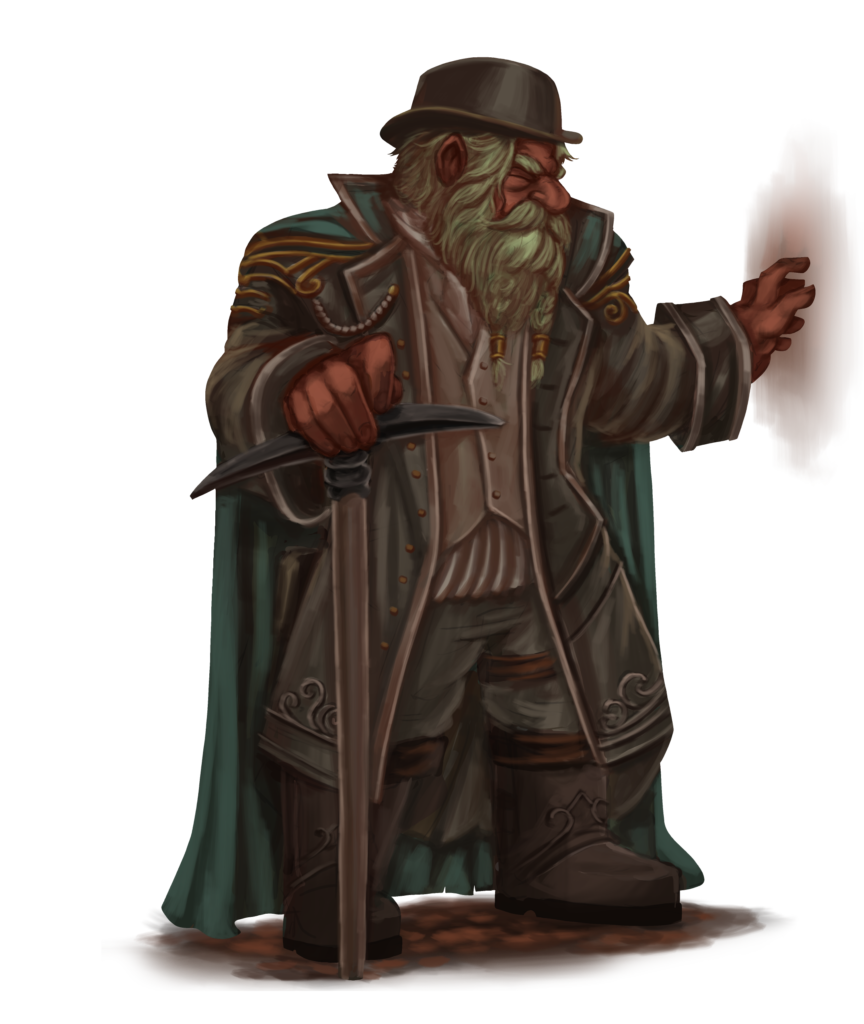Dwarf
History and Culture
Dwarves are the only native sapients on Terra Mundus descendant from elementals, specifically xorn. Despite not being descendant from homidians, they are often mistaken for homids as a result of their smooth skin and plentiful head and facial hair. Tails are rare among dwarves, but are disproportionately represented in cave dwarves.
Dwarves and Gender
Dwarves are not sexually dimorphic, but they have picked up the social construct of gender from other sapients. They have complex social expectations that vary from culture to culture and clan to clan. Some noble families adopt one gender or another and expect their children to adhere to adhere to specific norms. Others consider gender to be attributable by trade, social role, personal preference, or parental assignment.
Relationship to other sapients
Many dwarves have a natural blind spot when it comes to knowing what is safe for non-dwarves to eat. Those who fear poisoning their non-dwarven guests tend to provide bland unseasoned food with simple ingredients. As a result, dwarven cuisine has a reputation among other peoples as being bland.
Dwarven Traits
As a dwarf, you have the following traits as well as those granted by your heritage.
Creature Type. Sapient Drakid
Legacy: Elemental. You have advantage on saving throws against effects that would poison or petrify you. In addition, you have resistance to toxic damage.
Size. Dwarves stand between 4 and 5 feet tall and average about 200 pounds. Your size is Medium.
Speed. Your base speed is 30 feet.
Tool Proficiency. You gain proficiency with one artisan’s tool of your choice (usually smith’s tools, mason’s tools, or miner’s tools).
Dwarven Weapon Training. You are proficient with shields or one primitive melee weapon.
Languages. You can speak, read, and write Terran and Dwarven.
Dwarven Lineages
In addition to the traits granted by your dwarven lineage, you begin with the traits associated with one of the dwarven heritages below.
Cave Dwarf
Cave Dwarves claim to be the first of their kind, which is lent credence by their closer resemblance to their xorn ancestors and their ability to perceive through rocks and soil.
Stone Sense. While you are blinded and your skin is in contact with an earthen surface, you have tremorsense out to 60 feet but can only perceive through stone or dirt. You can gain the blinded status by closing your eyes.
Cave Dwarf Training. Most Cave dwarves carry a miner’s pick and are proficient with the war pick (see Dwarven Weapon Training). Select one of the following.
- Pick Master. You treat any miner’s pick as a war pick with the versatile property.
- Stone Adept. If you are capable of casting spells, you can use a miner’s pick as a spellcasting focus that can be held in one or both hands. Whenever you select a weapon proficiency, you can instead select Earth (Stone) proficiency.
Option: Lost Heritage
Cave Dwarves raised away from their clan often lack someone to teach them the dwarven language and how to properly handle a mining pick, but retain their natural connection to elemental earth.
You can play a cave dwarf with lost heritage by replacing the Dwarven Weapon Training and Cave Dwarf Training traits with either the Trade Skill or Stone Savant trait below.
- Trade Skill. You have training and expertise with one additional skill or tool.
- Stone Savant. You are proficient with Earth (Stone).
Languages. You can speak, read, and write two mundane languages (Terran, Ignan, Auran, or Aquan).

Forge Dwarf
Forge dwarves classify themselves using the names of metals significant to their clan. Steel and gold dwarves, for example, see each other as separate breeds defined not by their similarities, but by their differences. Ironically, some forge dwarf clans are far more welcoming to other peoples than their closest kin. Forge dwarves have traditionally built their cities into mountainsides, allowing them access to the deeper earth where they can mine their precious metals while properly venting their plentiful forges.
Coming Soon!
Lumber Dwarf
Lumber dwarves loosely classify themselves by the trees they tend and fell. Unlike most dwarves, lumber dwarves tend to live in log cabins rather than caverns and mountains. Most lumber dwarves consider all dwarves kin and tend to be welcoming to strangers. Though more than one welcome guest has found that hospitality sour quickly when they suspect their forests, lands, or blue aurochs are at risk.
Coming Soon!

